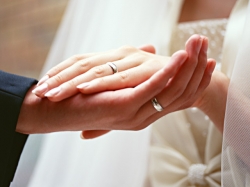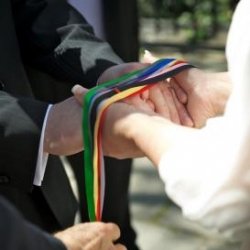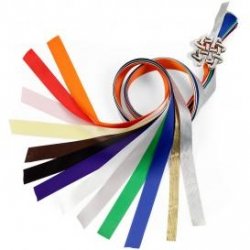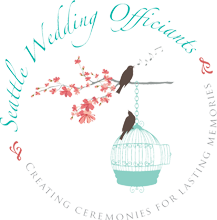Customs, Rituals & Traditions: Celtic Handfasting Ceremony
Each week I will examine a wedding custom, ritual or tradition that has been passed from generation to generation. We’ll look at its origin and how it has influenced the lives of our ancestors and how it impacts us today. We’ll also look at how we create our own customs and how these new traditions are a reaction to and a reflection of our changing world.
Handfasting: An Ancient Wedding Tradition
 We have all heard the expressions “tied the knot” or “giving one’s hand in marriage”. But have you ever wondered where those sayings came from? And no, it’s not in the same category as the “ball and chain”! It’s in reference to the ancient tradition of handfasting. This lens gives an overview of the ancient tradition of handfasting in Wedding ceremonies.
We have all heard the expressions “tied the knot” or “giving one’s hand in marriage”. But have you ever wondered where those sayings came from? And no, it’s not in the same category as the “ball and chain”! It’s in reference to the ancient tradition of handfasting. This lens gives an overview of the ancient tradition of handfasting in Wedding ceremonies.
What is Handfasting?
Origins of Handfasting 
The Colors Of Handfasting
In the traditions of Celtic handfasting the couple’s wrists are bound together using ribbons of thirteen different colours. Each color has it’s own special meaning:

The Colors of Handfasting
Red: passion, strength, lust, fertility
Orange: encouragement, attraction, kindness, plenty
Yellow: charm, confidence, joy, balance
Green: finances, fertility, charity, prosperity, health
Blue: tranquility, patience, devotion, sincerity
Purple: Power, piety, sanctity, sentimentality
Black: strength, wisdom, vision, success
White: purity, concentration, meditation, peace
Gray: neutrality, canceling, balance
Pink: unity, honor, truth, romance, happiness
Brown: earth, grounding, talent, telepathy, home
Silver: treasure, values, creativity, inspiration
Gold: energy, wealth, intelligence, longevity
[Handfasting~A Wedding Ritual]. November, 2011. Retrieved from: http://www.squidoo.com/Handfasting-Wedding-Ritual



Leave a Reply
Want to join the discussion?Feel free to contribute!